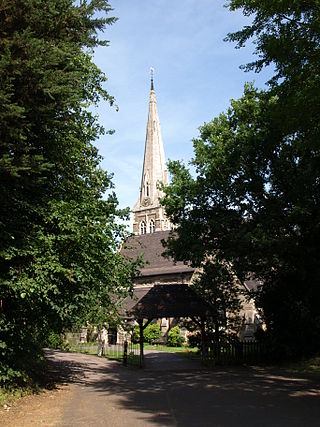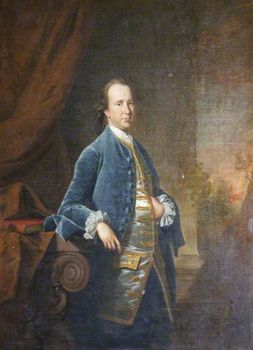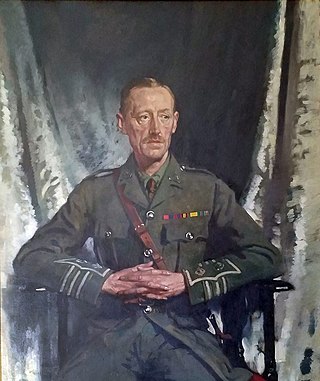
George Richards Elkington was a manufacturer from Birmingham, England. He patented the first commercial electroplating process.
Dunsmore is a name with a separate origin in Scotland and England.

Princethorpe is a village and civil parish in the Rugby district of Warwickshire, England. In the 2011 census the parish had a population 376, increasing to 429 at the 2021 census.

Stretton-on-Dunsmore is a village and civil parish in the English county of Warwickshire. Its population in the 2001 Census was recorded as 1,143, rising slightly to 1,159 at the 2011 Census. In the 19th century the population was 634. The village is situated just south of the A45 road, approximately midway between Rugby and Coventry. Administratively, Stretton is part of the borough of Rugby. Stretton means "settlement on a Roman Road". In this case the road is Fosse Way. This site is referred to in the Domesday Book.

Madeley is a village and ward in the Borough of Newcastle-under-Lyme, North Staffordshire, England. It is split into three parts: Madeley, Middle Madeley, and Little Madeley. Madeley Heath is also considered by many to be part of Madeley. In the 2001 census, the population was recorded as 4,386, decreasing to 4,222 at the 2011 Census.

Beaudesert is a village, civil parish and former manor in the Stratford-on-Avon district of Warwickshire, England, immediately east across the River Alne to the east of Henley-in-Arden, to which it is closely associated and shares a joint parish council with. The main village, consisting of the church and a single short street of houses, stands close to the river and directly opposite Henley Church. Behind the village to the east rises the hill, locally known as 'The Mount', crowned with the earthwork remains of Beaudesert Castle of the De Montforts. According to the 2001 Census it had a population of 919, increasing to 990 at the 2011 Census.

William Ward (1769–1823) was an English pioneer Baptist missionary, author, printer and translator.

St. Mary's Church, Selly Oak is a Church of England parish church in Selly Oak, Birmingham, England.
Bowes Reed was a Revolutionary officer, politician, and public servant from New Jersey. He was the brother of Joseph Reed, a member of the Continental Congress and President of the Supreme Executive Council of Pennsylvania.
Sir John Mordaunt, 7th Baronet was an English politician who represented the constituency of Warwickshire.

William Stretton was a builder and architect based in Nottingham.
John Grundy Jr. (1719–1783) was an English civil engineer, who worked on a number of drainage schemes, canal projects and dock works. He lived in Spalding, Lincolnshire, from 1739. Part of his legacy was his Report Books, seventeen volumes containing copies of his reports and other supporting documents from most of his projects, which in some cases are the only surviving records of major civil engineering projects. They were re-discovered in 1988.
Andrew James Cochrane-Johnstone was a Scottish soldier, politician, swindler and adventurer who was found guilty of participation in the Great Stock Exchange Fraud of 1814. He was born in Edinburgh, Scotland.

Denys Rolle of Hudscott, Beam, Stevenstone and Bicton in Devon and East Tytherley in Hampshire, was an independent Member of Parliament for Barnstaple, Devon, between 1761 and 1774. He inherited a large number of estates and by the time of his death he was the largest landowner in Devon. He was a philanthropist and generous benefactor to charities and religious societies.
John Bird, of Kenilworth, Warwickshire, was a British politician who sat in the House of Commons from 1734 to 1737.
John Heathcote was a British politician, MP for Gatton from 1796 to 1798, and for Ripon from 1798 to 1806.

The Burdett Coutts Memorial Sundial is a structure built in the churchyard of Old St Pancras, London, in 1877–79, at the behest of Baroness Burdett-Coutts. The former churchyard included the burial ground for St Giles-in-the-Fields, where many Catholics and French émigrés were buried. The graveyard closed to burials in 1850, but some graves were disturbed by a cutting of the Midland Railway in 1865 as part of the works to construct its terminus at St Pancras railway station. The churchyard was acquired by the parish authorities in 1875 and reopened as a public park in June 1877. The high Victorian Gothic memorial was built from 1877 and unveiled in 1879. The obelisk acts as a memorial to people buried near the church whose graves were disturbed; the names of over 70 of them are listed on the memorial, including the Chevalier d'Éon, Sir John Soane, John Flaxman, Sir John Gurney, and James Leoni.

John Corbet (1751–1817) of Sundorne, was an English sportsman of the Shropshire landed gentry and politician who sat in the House of Commons from 1775 to 1780.

John Martin (1692–1767) was a British banker and politician who sat in the House of Commons from 1741 to 1747.

Lieutenant Colonel John Ford Elkington was a British Army officer. Elkington attended Elizabeth College in Guernsey and the Royal Military College, Sandhurst. He was commissioned into the Royal Warwickshire Regiment in 1886. Elkington served with the West African Frontier Force, with British forces in the Second Boer War and in India. In 1914 he was promoted to lieutenant colonel and given command of his regiment's 1st battalion. Elkington deployed to France at the start of the First World War with his unit and saw action at the 26 August Battle of Le Cateau during the Great Retreat from Mons. That afternoon the battalion retreated to Saint-Quentin, Aisne where it became mixed with the 2nd battalion of the Royal Dublin Fusiliers. The men were exhausted and hungry and Elkington was disappointed at finding no onward transport in the town. The Dublins' commander, Lieutenant Colonel Mainwaring, entered into a written agreement with the town's mayor to surrender rather than fight in the streets, though Elkington stated he did not see the agreement. The following day a cavalry major arrived in the town and by threats and encouragement succeeded in marching the men and other stragglers out of the town and away from advancing German forces.













